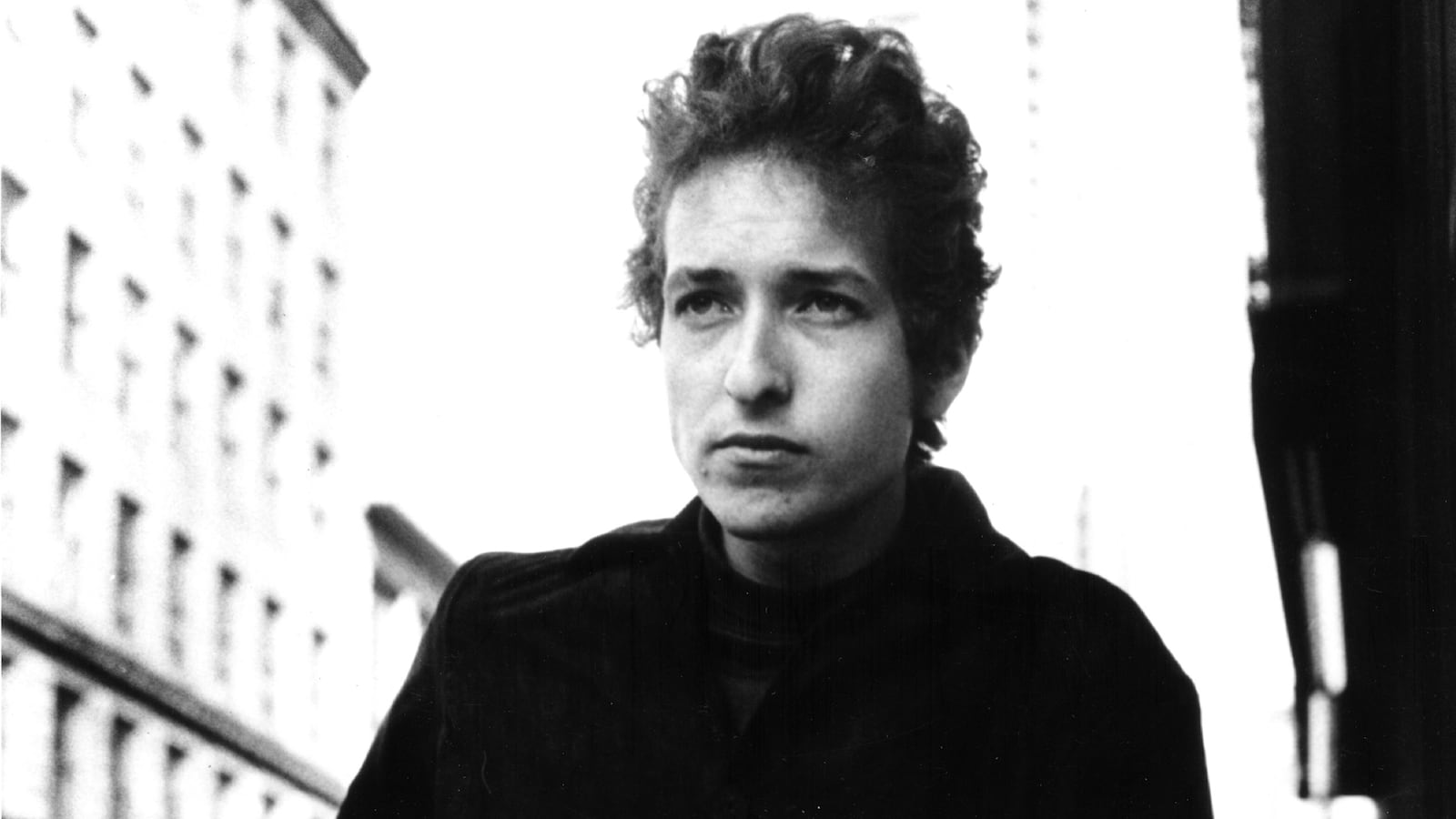Bob Neuwirth, Bob Dylan’s closest friend and “supreme hip courtier” during this period, later recalled that it was on a snowy night sometime in the late fall of 1965 when he and Dylan first crossed paths with Edie Sedgwick. Dylan had finally returned east after a harrowing tour with his new band, the Hawks, and had more or less abandoned the house he had bought in Woodstock, not believing he could write something new in a place where he’d written before. “It’s just a hang up, a voodoo kind of thing,” he said. “I can’t stand the smell of birth. It just lingers.” Instead, he had returned with his girlfriend Sara Lownds to the Chelsea Hotel—the perfect environment for writing the city songs he had in mind.

Dylan had made tons of money, but the pressure had been great. For the past year, at least, he had sustained himself with what he euphemistically called “a lot of medicine,” which had left him whipthin, sharp-tempered, and hardly able to sit still. At the same time, the Kennedy assassination, the splintering civil rights movement, and the escalating war in Vietnam were all pushing people toward a fin-de-siecle state of mind further nourished by the speed and acid now ubiquitous in New York. At the Chelsea, amphetamine addicts screamed insults in the lobby at three in the morning, and marijuana smoke lingered on the stairwell while the 24-year-old international sensation sat up nights scribbling notes about “the undertaker in his midnight suit” and “the rainman… with his magic wand” as he embarked on his “magician” phase.
On November 9, a vast power failure had blacked out the entire Northeast. In its wake, newspapers around the world reported on the medieval, carnival-like atmosphere that had taken over the city of New York during those moonlit hours: young men selling candles on a patch of pavement near Astor Place, subway riders trapped in trains, visitors to St. Patrick’s Cathedral warming their hands over vigil candles, Bergdorf ’s employees dancing out of the store hand in hand. A few weeks later, at the Chelsea, Dylan’s “Visions of Johanna” was born—more than seven minutes of flickering lights and coughing pipes, escapades on the D train, and visions of Johanna rising up like an elusive, longed-for, genuine old America to haunt a darkened New York night.
To write songs like that, Dylan acknowledged, “You’ve got to have power and dominion over the spirits.” You had to be able to “see into things, the truth of things—not metaphorically, either, but really see… with hard words and vicious insights.” Even at the time, the singer was aware that he was hitting a peak. He would continue making records, he told a friend after recording “Visions of Johanna,” but “they’re not gonna be any better from now on.”
All he wanted to do was write and sing. But the strain of living under constant observation was wearing on Dylan’s nerves, sharpening his aggression. Egged on by Neuwirth, who had his own “taste for provocation,” Dylan taunted his folksinger friends about his success, digging at their hidden envy. He suggested to Phil Ochs, his neighbor at the Chelsea, that he find a new line of work, maybe as a standup comedian. But when Ochs dared to suggest that one of Dylan’s recent songs was okay but not brilliant, he was kicked out of his friend’s limousine and cut off with no possibility of appeal.

Dylan and Neuwirth were still in the thick of this nihilistic phase when someone suggested Neuwirth look up a “terrific girl” named Edie Sedgwick. A Warhol superstar seemed perfect fodder for the two provocateurs’ tests of character, so one night from their Village hangout the Kettle of Fish, Dylan and Neuwirth gave her a call. When Edie took her limousine downtown to join them, they found her perfectly capable of holding her own. “We spent an hour or two, all laughing and giggling, having a terrific time,” Neuwirth recalled. Dylan later acknowledged, somewhat diffidently, that Edie was an “exciting girl, very enthusiastic.” But Neuwirth in particular saw something unique. Edie, he said, had “a tremendous compassion” for those “who had seen the big sadness.” He continued to pull the actress into their orbit, encouraging her to believe that she might have a future in the Hollywood films that everyone assumed Dylan would make. For Sedgwick, a film role with Dylan seemed the perfect way out of Warhol’s Factory. Years later, Edie’s brother Jonathan would recall that Edie “called me up and said she’d met this folk singer in the Chelsea, and she thinks she’s falling in love. I could tell the difference in her, just from her voice. She sounded so joyful instead of sad.”
The possibility of the pairing crossed more than one observer’s mind, as Dylan’s and Warhol’s rival enclaves rubbed up against each other that winter at Ondine’s and the Scene, and as Dylan dropped in at the Factory long enough to do a Screen Test. But in Dylan’s world, events were unfolding that would solidify his life’s direction. Sara was pregnant, and the magician had to decide whether it was time to lay his cards down.
Ten years later, when his marriage to Sara was beginning to fall apart, Dylan would reflect back on this time of decision at the Hotel Chelsea, where, he claimed in his 1975 song “Sara,” the first images in his haunting masterpiece “Sad-Eyed Lady of the Lowlands” surfaced in his mind. Women had always played an important, creative role in his life. Suze Rotolo had taught him much of what he loved most about New York. Joan Baez had given him a musical education along with her professional blessing. Edie Sedgwick, the subterranean princess, was undoubtedly interesting and fun. But Sedgwick longed for a prince to rescue her. Sara could take care of herself. “The one thing about [Sara] that I always loved,” Dylan wrote, “was that she was never one of those people who thinks that someone else is the answer to her happiness. Me or anybody else.”
The Chelsea’s thick walls had been built to protect a poet who was contemplating his fate, asking the question, with the music of an ancient folk song running through his head, “Sad-eyed lady, should I wait?” He took his time. As he would later write, quoting Johnny Cash, “I keep a close watch on this heart of mine.” But his decision came clear, and on November 22, in a private civil ceremony at a judge’s home on Long Island, Dylan and Sara Lownds were secretly married.
Excerpt from Inside the Dream Palace by Sherill Tippins. Copyright © 2013 by Sherill Tippins. Used by permission of Houghton Mifflin Harrcourt Publishing Company. All rights reserved.






